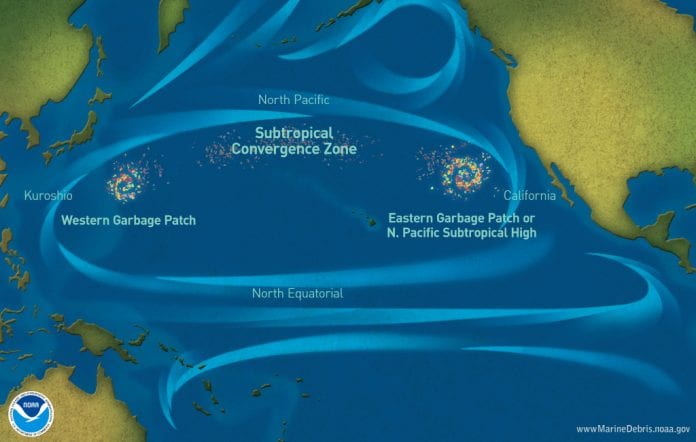Backers of the world first ocean cleanup system say they are heading back to the Great Pacific Garbage Patch in June to test new upgraded system designs, using what they learned from System 001 in efforts to clean up the mass of ocean garbage.
They will be working with System 001/B to test modifications for capturing plastic while withstanding the forces of the ocean, the San Francisco-based entity said in an announcement on May 25.
To effectively remove massive amounts of plastic, the system must be able to catch and retain plastic for long periods of time with minimal plastic loss. According to Boyan Slat, founder and chief executive officer of the Ocean Cleanup, “to retain the captured plastic, it is not as important if the system moves slower or faster than the plastic, rather the key is consistency, the velocity differential must either always be positive or negative.
“In other words, the system must always go faster than the plastic or always go slower than the plastic. Fluctuations in the speed will prevent the plastic from staying within the system, as we saw during the previous campaign,” Slat said.
The online magazine Maritime Executive noted in a report on the upcoming plan that last September during the launch of the first System 001 it was found that the system did not maintain a sufficient speed allowing plastic to exist the system and that a stress concentration caused a fatigue fracture in the HDPE (high-density polyethylene) floater. HDPE is used in production of plastic bottles, corrosion-resistant piping, geomembranes and plastic lumber. It is commonly recycled and has the number “2” as its resin identification code. Geomembranes are synthetic membrane liners or barriers used to control fluid migration in a manmade project or system.
Ocean currents concentrate plastic garbage in five areas of the world, with the largest one located between California and Hawaii.
Ocean Cleanup’s goal is with full-scale deployment of its systems to clean up 50 percent of the Great Pacific Garbage Patch every five years.















